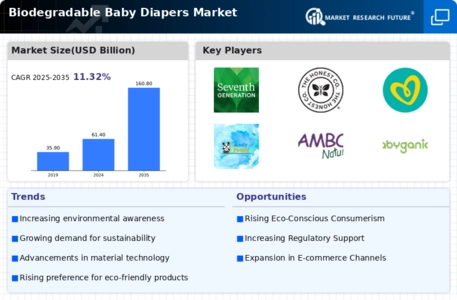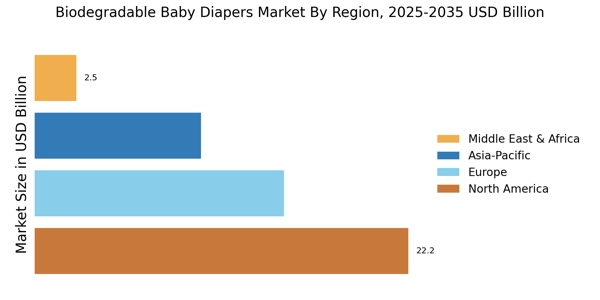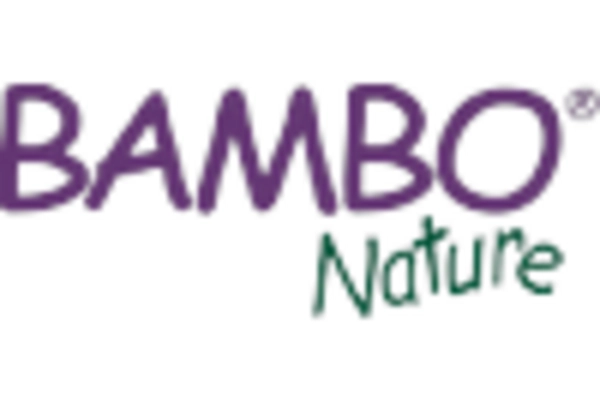Changing Consumer Preferences
Changing consumer preferences are a significant driver for the Biodegradable Baby Diapers Market. As parents become more informed about the environmental implications of their purchasing decisions, there is a noticeable shift towards products that align with their values. This trend is particularly evident among millennials and Gen Z parents, who prioritize sustainability and ethical consumption. Market data reveals that a substantial portion of this demographic is actively seeking biodegradable options, viewing them as a responsible choice for their children and the planet. This evolving consumer behavior is prompting manufacturers to adapt their marketing strategies and product offerings to cater to this growing segment, thereby enhancing the overall market landscape for biodegradable baby diapers.
Rising Environmental Awareness
The increasing awareness regarding environmental issues is a pivotal driver for the Biodegradable Baby Diapers Market. Consumers are becoming more conscious of the ecological impact of traditional disposable diapers, which can take hundreds of years to decompose. This shift in consumer mindset is leading to a growing preference for biodegradable alternatives. Market data indicates that the demand for eco-friendly products has surged, with a notable percentage of parents willing to pay a premium for sustainable options. This trend is likely to continue as more individuals recognize the importance of reducing landfill waste and minimizing their carbon footprint. Consequently, manufacturers are responding by innovating and expanding their product lines to include biodegradable options, thereby aligning with consumer values and preferences.
Supportive Regulatory Frameworks
Supportive regulatory frameworks are increasingly influencing the Biodegradable Baby Diapers Market. Governments and regulatory bodies are implementing policies that promote sustainable practices and encourage the use of biodegradable materials. This regulatory support is often manifested through incentives for manufacturers who adopt eco-friendly production methods. Market data indicates that regions with stringent environmental regulations are witnessing a faster adoption of biodegradable products, as companies strive to comply with these standards. Furthermore, as public pressure for sustainability grows, it is likely that more countries will introduce regulations aimed at reducing plastic waste, thereby further propelling the demand for biodegradable baby diapers. This regulatory landscape creates a favorable environment for market growth and innovation.
Increased Investment in Sustainable Products
Increased investment in sustainable products is a driving force behind the Biodegradable Baby Diapers Market. Investors are increasingly recognizing the potential of eco-friendly products, leading to a surge in funding for companies focused on sustainability. This influx of capital enables manufacturers to invest in research and development, resulting in improved product offerings and expanded market reach. Market data indicates that companies with a strong commitment to sustainability are experiencing higher growth rates compared to their traditional counterparts. As the market for biodegradable baby diapers expands, it is likely that this trend of investment will continue, fostering innovation and enhancing competition within the industry.
Technological Advancements in Diaper Production
Technological advancements play a crucial role in shaping the Biodegradable Baby Diapers Market. Innovations in material science have led to the development of new biodegradable materials that maintain the performance and absorbency of traditional diapers. For instance, the introduction of plant-based polymers and organic materials has enhanced the feasibility of producing high-quality biodegradable diapers. Market data suggests that these advancements not only improve product performance but also reduce production costs, making biodegradable options more accessible to a broader audience. As technology continues to evolve, it is anticipated that the market will witness further enhancements in product design and functionality, thereby attracting more consumers to choose biodegradable alternatives over conventional options.


















Leave a Comment